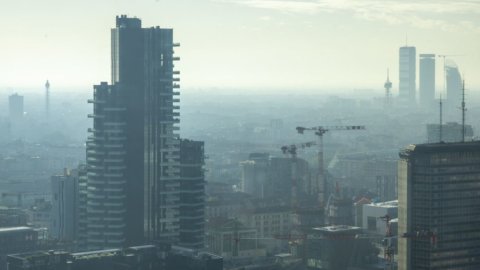Turin, Bari, Palermo, Brescia, Parma, Verona are among the European cities with poor air quality. Provincial capital city "forced" to do something. The fault of their pollution lies in the PM 2,5 fine particles which show no signs of decreasing throughout Europe. Le italiane are in the new Air Quality Atlas for Europe published by JRC, the Joint Research Center of the European Commission. They have all been classified as polluted by various agents and now we have to wait to see if they will take steps to face the winter. In the case of Palermo and Bari, they are also found in the publication for the emissions of ships in their respective ports.
The European Center has catalogued 150 city and, in addition to the public health alarm, it also provided indications to be adopted. “The impact of the measures on PM concentrations vary from city to city, even for cities in the same country. For many, local actions on an urban scale are an effective means of improving PM 2,5 air quality“, reads the document which arrives a few days after Cop26. In the meantime, the discussion on the effects of the smog on the spread of Covid in certain areas.
The reality as regards Europe – Italy included – is that the sources of smog are different and they almost always circumvent WHO directives. The European Union itself estimated in 2019 the record figure of 307 premature deaths in the old continent due to air pollution. Not only. The catastrophe caused considerable damage to the socio-economic fabric. At the beginning of the year, the European Public Health Alliance (EPHA) analyzed the situation of 432 cities, estimating 166 billion euro losses global for failure to take adequate measures.
Restrictive measures or preventive actions? The decisions to be made generally revolve around these two options. In fact, the Atlas now sounds like a further warning to the public authorities to intervene. Governments, Regions and Municipalities have at their disposal a framework which it does not leave out any sector of the economy. Industry, transport, agriculture, heating, each sector contributes to poisoning the air and health.
PM 2,5 contains everything: dust, smoke, soot, pollen. THE transport damage Brescia, Parma, Verona together with German cities such as Hanover or Bonn, while the residential heating impacts on Turin, Sofia, Zagreb, Budapest. Palermo and Bari are ranked with Valletta and Palma de Mallorca, among others, as exposed coastal cities ship jets. A contribution to this calamity can come from urban and extra-urban forestation.
Invest in planting trees this is what the Italian Municipalities should do to compensate for the progressive reduction of public parks. On National Tree Day, Coldiretti appealed for the extension of the green bonus of the Draghi government. If 300 new trees are planted over the next three years, creating an additional 8 million square meters of parks and gardens, the particulate matter situation will improve. But it must be remembered that the vast majority of capital cities have not prepared public green plans. He says the Atlas well when he writes that "know the contributions to emissions and their origin can help cities develop measures targeting their most polluting activities. Also understand whether interventions at local, national or European level will be more effective. Made, mind you, with public money.





